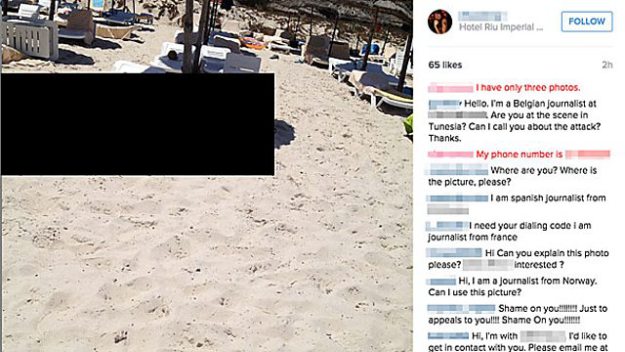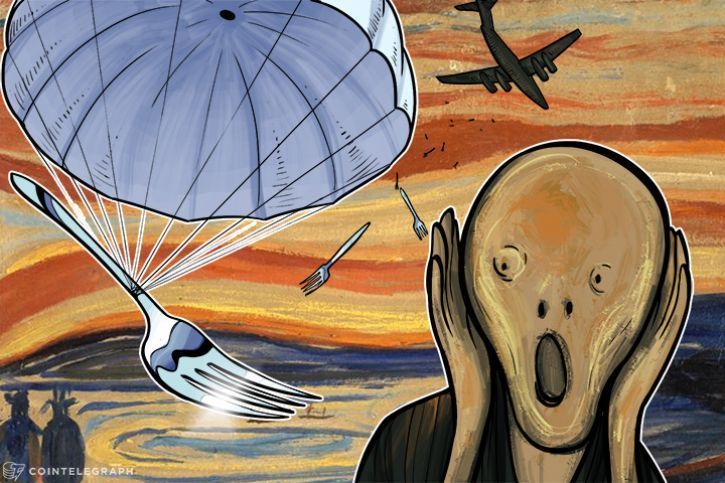We (journalists) need to change the way we respond to tragedy. These are people not stories https://t.co/8vlmi9kSnF
— Gareth Davies (@Gareth_Davies09) May 23, 2017
One of the most dreaded assignments in journalism has always been the death knock: the job of knocking on the door of someone affected by tragedy.
In the pre-Internet era, the death knock would typically fall to someone at the local newspaper; and, perhaps, reporters from a news agency or two would also come knocking. In some cases, journalists from the nationals, broadcasters and magazines would arrive too.
It was rarely pretty. But that didn’t mean it wasn’t justified.
Now the nature of the death knock has changed. In web parlance, it has scaled. And the problem is: it doesn’t scale well.
Removing the friction from journalismWhen I was caught up in a terrorist incident 4yrs ago, the behaviour of UK media made the trauma much worse. They don't seem to have changed
— Em (@DrEm_79) May 23, 2017
When tragedy breaks in a modern setting, it breaks at speed. The friction that used to exist in the majority of cases — news trickling from local newspaper to news agency to the nationals — has gone. Tragedy can go viral in minutes. As a result, a number of things happen:
- Firstly, the death knocks can come all at once
- Secondly, they can jam your communications networks
- Thirdly, there are more journalists getting in touch, unrestricted by physical location
- Fourthly, because of that they will have less experience in dealing with these situations
- And finally, with added speed comes added pressure on journalists: there is perhaps less time for sensitivity or patience
The problem doesn’t just work in one direction, either. The speed with which news travels is exacerbated by the ease with which people’s details can be accessed.
…accessing locked social media accounts of victims, or friendly friends to gain access is an intrusion…
— David Banks (@DBanksy) May 23, 2017
This is called OSINT – or Open Source Intelligence. Previously the preserve of those working in intelligence, policing and investigative journalism, it is now being used by a growing pool of journalists. It is taught on my own journalism courses; it is in my introductory textbook.
Like any tool, these techniques can be used for good reasons, but they can also be used poorly. When a tragic news event takes place, it is easier than ever to trace the people involved — and to deliver your death knock remotely, not just via any number of social media platforms but by phone too.
We keep talking about the problem with UGC ethicsThis, as Alastair Reid noted last year, can lead to a backlash against journalists: “We’ve got this technological solution,” said Claire Wardle in that article:
“Which is the fact that you can find someone immediately and message them immediately, but very few people are ready to talk in that moment.”
This problem has led to concerns being raised at increasingly regular intervals about the ethical codes and workflows within which journalists deal with UGC: a year before Alastair Reid’s article, Eyewitness Media Hub‘s Sam Dubberley was warning that “newsrooms must handle [UGC] better or risk losing out“. In 2011 Kirsty Malcolm asked if the media industry was encouraging people to put their lives at risk; in 2007 the Virginia Tech shootings — one of the earliest major news events to involve a significant number of people who were using social media — raised concerns too.
These concerns have led to a number of ethical codes and frameworks, from Eyewitness Media Hub’s Guiding Principles for Handling Eyewitness Media to FirstDraft’s guide to approaching social sources.
So far this has been branded as a ‘UGC’ problem. But the Manchester bombing should make us realise that it’s not about UGC any more — and perhaps it never was: it’s a basic newsgathering and interviewing problem.
The BBC’s guidelines on reporting death, suffering and distress, for example, are not directly related to UGC. But they prove to be very relevant here:
“We should normally request interviews with people who are injured or grieving following an accident or disaster by approaching them through friends, relatives or advisers. We should not: put them under pressure to provide interviews; harass them with repeated phone calls, emails, text messages or knocks at the door”
Why should UGC be any different?
1000 well intentioned people can still be overwhelming
Image from BBC Academy
But even if every newsroom received the memo about sensitivity, the problem is that 1,000 ethically-informed approaches is still — well — 1,000 approaches.What’s worse, those are 1,000 approaches being made in front of a watching audience of thousands more.
As I said: death knocks don’t scale.
So what can we do?
Part of the problem is that we are still stuck in a reporting mindset of information scarcity: the chase for the footage, the photo, the reaction is based on an assumption that those things are hard to find. They’re not. We could simply link to that material, but that raises its own problems, and given news organisations’ historic fear (not justified by any evidence) of sending people off site, I’m not holding my breath that that would happen anyway.
Instead, perhaps we need to find ways to reintroduce friction to the system. After all, UGC agencies like Storyful and Newsflare already perform a role similar to that of the old news agencies. And social media platforms are beginning to take on that role too. If we’re happy to contract out that work, we lose some of the the scale problem.
Perhaps users will add the friction themselves, hiding themselves behind private accounts and deleting details from the web. That’s probably more likely.
Whichever way it goes, there are some ugly lessons being learned by both journalists and their audiences. If we don’t learn from them we can hardly complain if the outcome turns out to be a relationship that’s even worse than it is now.
#Manchester The virtual doorstep – the issues with journalists approaching families/survivors online https://t.co/HmKAWYMYS9
— Dr Glenda Cooper (@glendacooper) May 25, 2017
Advertisements Share this:





